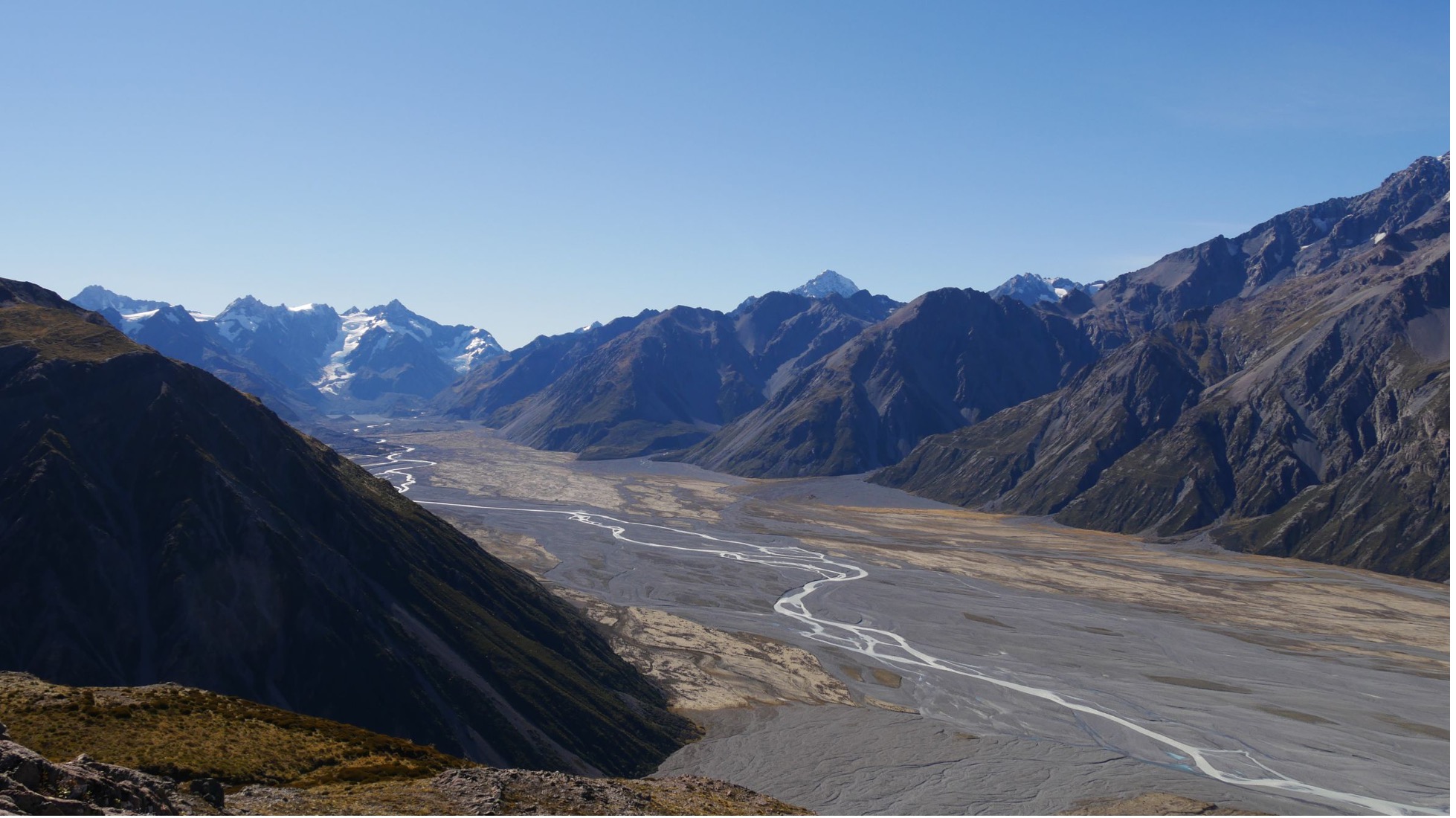 Earth & Space
Earth & Space
Too hot to stay cool: dangerously accelerating glaciers’ melt in New Zealand
Glaciers persisting over centuries respond slowly to environmental changes, allowing scientists to estimate the long-term effects of climate change. We reveal that at least 40% of the ice in mountain glaciers across the Southern Alps in New Zealand, has been lost since the Little Ice Age. The accelerating loss of the natural water reservoir has highlighted the severity of ongoing climate change.

Glaciers, popularly thought of as rivers of ice, are "sentinels" of climate change — stable and persisting over centuries, they slowly respond to environmental changes. So, measuring fluctuations in glaciers provides a great way to estimate the long-term effect of changing climate. Diminishing or even disappearing glaciers dramatically change the appearance and the functioning of landscapes and the resultant meltwater that is relatively cold and sediment-rich affects river and coastal ecosystems.
Our ability to measure glaciers' geometric changes (length, area and thickness) over centuries comes from landforms deposited and preserved from former glacier advance. The last widespread glacier advance occurred during the Little Ice Age, which was 200 to 500 years ago. Numerous studies have reported length and area reductions of glaciers since the Little Ice Age, but few studies have considered glacier volumes and, in particular, Southern Hemisphere locations are relatively poorly-explored.
Glaciers across the Southern Alps of New Zealand significantly affect natural hazard processes such as landslides and floods and control river water level and temperature. Despite the exceptionally dynamic nature of the New Zealand landscape due to the interplay of tectonics, geology, climate and glaciation, there remain impressive landforms, especially ridges of moraine — boulders and sediment deposited at the margin of glaciers when they were bigger. These moraines prompted our in-depth investigation because these characteristic geological features record not only past glacier extent, but also its behavior.
In this study, we used high-resolution aerial photography and satellite images to map the areal extent of glaciers across the Southern Alps. We developed our interpretations using sites where Little Ice Age glacier extents had previously been identified and dated from moraine ridges on valley sidewalls. We then applied our interpretations in neighboring valleys, ultimately determining the extent of 400 glaciers at the Little Ice Age, many of which were once coalesced parts of multiple small glaciers that persist today. Using a digital elevation model, we determined the elevation of our Little Ice Age glacier margins and interpolated a surface between them. The difference between our Little Ice Age surface and the modern ice elevation gave us an estimate of the lowering of each glacier that has occurred and thus of the volume lost for each glacier since the Little Ice Age.
Mindful of the uncertainty in our estimates, we calculated that between 41% and 62% of the Southern Alps Little Ice Age total ice volume has been lost. That amount was unexpected given that Patagonia has lost only 11% of ice since the Little Ice Age, for example. It most likely demonstrates that Southern Alps glaciers have faster response times, although it might also reflect a faster-changing climate across New Zealand than across South America. We also found that the rate of loss has nearly doubled when comparing the period from the Little Ice Age to 1970s with the last decade. A doubling in mass loss of mountain glaciers in recent decades, due to the accelerating global warming, has been identified in several other world regions such as Iceland, the European Alps, and parts of coastal Greenland.
We conclude that today's rates of glacier ice loss across the Southern Alps in New Zealand are the highest ever in the last millennium. In other words, climate is rapidly changing, and that both the glaciers and the mountain landscape are experiencing major threats. They are unable to quickly adapt to the robust changes and to remain stable, as glacier ice diminishes, snow cover declines, permafrost melts and water and sediment are released down valley. Glacier ice in the Southern Alps has now become restricted to higher elevations and to large debris-covered parts terminating in lakes. National parks and environmental conservation groups, water resource managers, natural hazard authorities and the public should all be aware of the consequences of such a rapidly changing climate on landscape to get prepared for future climate-related hazards.
Original Article:
Carrivick, J. L., James, W. H. M., Grimes, M., Sutherland, J. L. & Lorrey, A. M. Ice thickness and volume changes across the Southern Alps , New Zealand , from the little ice age to present. Sci. Rep. c, 1-10 (2020).
Edited by:
Dr. Akira Ohkubo , Associate Editor
We thought you might like
Ocean acidification and its effects on coral reef growth
Jul 8, 2016 in Earth & Space | 3.5 min read by Rebecca AlbrightResetting nature’s clock: shifting seasons and species relationships
Sep 14, 2016 in Earth & Space | 3.5 min read by Stephen Thackeray , Sarah BurtheThe silent battle of young corals against ocean acidification
Oct 19, 2016 in Earth & Space | 4 min read by Taryn FosterFor polar bears the cost of living is rising
Mar 13, 2018 in Earth & Space | 4 min read by George DurnerMore from Earth & Space
Discovery of the first radiation belt beyond the Solar System
Jan 27, 2025 in Earth & Space | 3.5 min read by Juan Bautista Climent OliverOne million (paper) satellites
Jan 24, 2025 in Earth & Space | 3 min read by Ewan Wright , Andrew FalleVolcanic Ash: A Nutrient Boost for Reef-Building Corals
Sep 18, 2024 in Earth & Space | 4 min read by Frank Förster , Tom SheldrakeAmmonia Energy: A Call for Environmental Awareness
Aug 29, 2024 in Earth & Space | 3.5 min read by Matteo Bertagni , Robert Socolow , Amilcare PorporatoLikely increase in coral thermal tolerance at a Pacific archipelago
Dec 29, 2023 in Earth & Space | 3 min read by Liam LachsEditor's picks
Trending now
Popular topics


